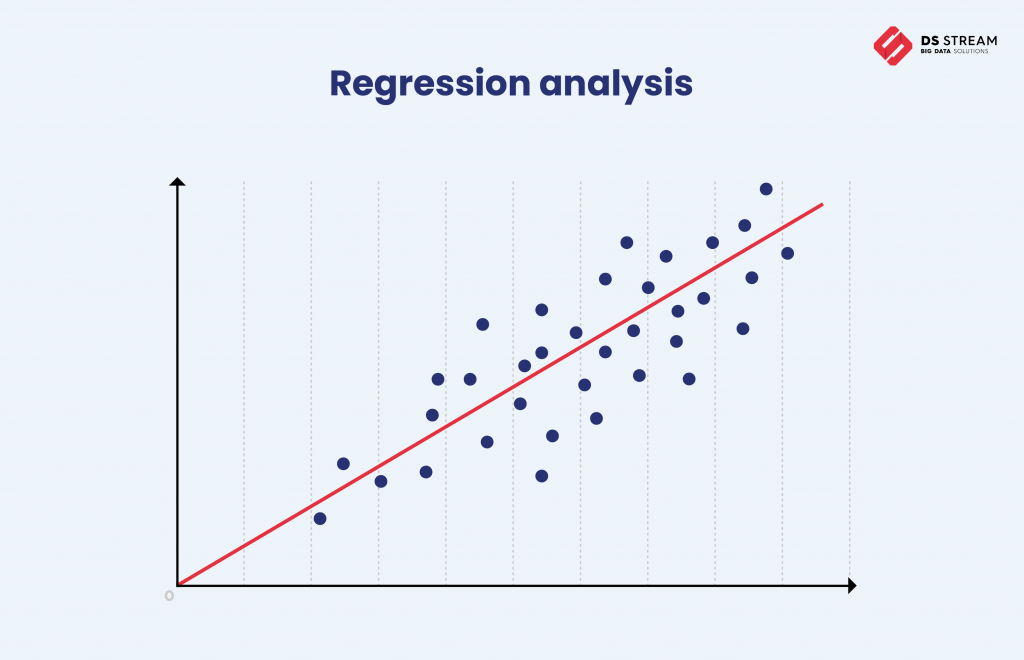
-
6 August 2021
- Big Data
Imagine you could foresee future events – preventing situations that could be bad for your business (or at least prepare for them) and making the most of your investments. You can actually have this power by leveraging modern technologies. With Big Data and Predictive Analytics you are one step away from turning your company into a more successful and competitive business.
Predictive Analytics has multiple applications. It can help you increase sales and understand future demand better, but also improve your company’s cybersecurity and learn of potential risks that might await you in the more distant future. Learn what predictive analytics really is and which techniques can be used by data analytics to produce predictions for your organisation. Visit our Data Science Consultancy to learn more
Predictive Analytics and Big Data – is it possible to predict a company’s future?
Analysing the data collected by an organization in order to gain insights about future business trends is called predictive analytics. This type of analytical practice leverages past information and patterns to make predictions from the gathered data. It is closely tied to machine learning – machine learning and predictive analytics are used to make predictions on a set of data about the future. Predictive analytics uses various techniques to produce predictions. It all starts with understanding the business needs. Then we extract available data or gather high quality new ones. After that we choose the right model that is trained on the data with the chosen model we are able to make predictions about the future.
Companies that take advantage of this technology have the chance to become more productive and flexible. Take a look at some benefits of predictive analytics.
Benefits of Predictive Analytics
Analytics helps companies understand their industry and customers better and predictive analytics enables them to get a glimpse of the future. Thanks to it, various organisations can increase overall business efficiency by:
- Reducing costs by optimizing production, sales, logistics and marketing campaigns.
- Defining product prices better based on predictions about demand.
- Improving cybersecurity by predicting suspicious activity in systems and preventing fraud.
- Leveraging knowledge about customer preferences in the product development process.
These are just a few examples of how you can use predictive analytics for your benefit. Read more about the most common predictive analytics techniques to understand how useful business predictions are produced.
Predictive Analytics Techniques
There are several techniques used when performing predictive analysis, such as machine learning, data mining, statics etc. Here are some you should learn about if you are interested in using predictive analytics in your company.
Regression Analysis
A regression analysis is a particular approach to modeling, which has proved quite useful for companies when they want to predict some numerical values, like an acceptable product price for a given customer group in some specific period of time.
Linear regression is a widely used technique for analysing the relationship between two given variables – such algorithms look for the pattern to predict the relationship between them (for example how the price of the item influences sales).
Neural Networks
Neural Networks are inspired by human brain structure. Thanks to their design, they are capable of finding complex correlations between data, just like humans do, by detecting patterns. These networks usually consist of one input layer, multiple hidden layers (on which predictions are calculated) and an output layer that stores a produced prediction. Neural Networks are capable of modeling more complicated patterns than mentioned classical regression and classification methods. They can also work with unstructured/less structured data like images, audio, video, documents and require less data preprocessing, because they are able to detect and create intermediate input features on their own.
There are many possible applications of Neural Networks. This solution can be applied to a broader family of problems than classical methods mainly thanks to its flexibility. This advanced technology powers applications that use image recognition and tools that social platforms use to filter out abusive content. It can be used for creating recommendation systems in e-commerce.
Decision Trees
Decision trees are a type of supervised machine learning. Their advantage is that they may take the form of a visual chart, which allows us to explain how a model came to its predictions, as opposed to black box models. It can be used to solve various classification problems. It is about calculating the expected value for each possible outcome of an action — with a numbered rank that makes it easier to select the best option.
A business analyst can come up with the predicted rate of failure or success for specific business ideas. This can be valuable when you’re trying to decide whether to invest a certain amount of money in many businesses (or how much to invest in a particular project).
There are multiple techniques that can be leveraged for producing trustworthy business predictions. It would be quite difficult to explain them without specific examples – if you’d like to learn how predictive analytic tools work, contact us – we’ll be happy to tell you more about it.
The most important predictive analytic models
Predictive data analytics tools are powered by many data models and algorithms that can be applied to various use cases. It is important for you to choose the tool that will be the best for your company. Here are some examples of the most important data models for predictive analytics. Learn how they work.
The Classification Model
This is one of the simplest types of predictive analytic models. It is mostly applied when a company needs to get a “yes or no” answer to some business questions. The model divides given data into categories based on what it has learned from historical data. It can be used by organisations from various industries, for example banking. It can improve the security of bank customers’ accounts by recognizing fraudulent transactions or help with assessing individual capability to repay the loan
The Clustering Model
The clustering model also puts data into separate categories. It is good for recognizing natural groups in sets of two-dimensional and multidimensional data. Simply, information is divided into sets based on its attributes – similar information is grouped together. This can be leveraged for client segmentation and better targeting marketing campaigns. It helps build individual marketing strategies for each group. This technique can help you not only cluster data that you already have, but also assign clusters for new data items.
The Forecast Model
Forecast model is used to predict numerical value based on new data. The forecast model analyses multiple input parameters to produce the most likely predictions. Thanks to it, you can make predictions on how many customers will convert in a particular period of time, and how many products a single shop or restaurant needs to be able to meet demand. These kinds of models are used in different industries and for different business purposes due to their versatility.
The Outliers Model
Does your company deal with atypical data entries within datasets? The outliers model could be a good solution for your business. It is capable of identifying anomalous elements in the set of the information alone or with other data categories if needed. This technique strengthens cybersecurity systems – it can identify fraud or spot suspicious behaviour in your company software or applications, which is why it is widely used by organisations from the financial and retail industries.
The Time Series Model
For this data model, time is an input parameter. It uses sets of historical data from a specific period of time to predict events.

This technique can also be utilized in multiple industries and departments, for example in healthcare to predict the number of customers that will come to a clinic during the next several weeks or the number of calls from clients that a customer centre can expect. Over a time a company can benefit from accurate business insights.
Why is predictive analytics important for business?
Predictive analytics tools can help you discover problems and risks you’re not aware of and enable you to avoid them or prepare to deal with them efficiently. Predictive analytics also makes it possible for you to uncover new opportunities (for example, ideas for investing your money) for your organisation. The most common uses of this technology are:
- Fraud detection
- Cybersecurity
- Customer segmentation
- Marketing optimization
- Risk management
Many companies are leveraging the power of predictive analytics. Let us know if you’d like to learn how it can help you boost your business.
Check out our blog for more in-depth articles on Data Science & Advanced Analytics:








